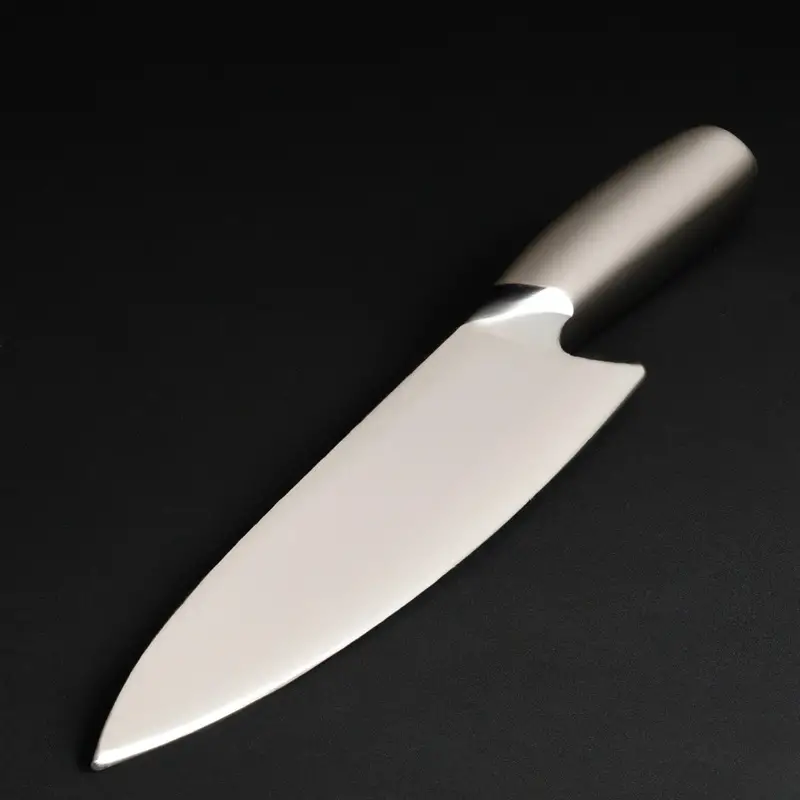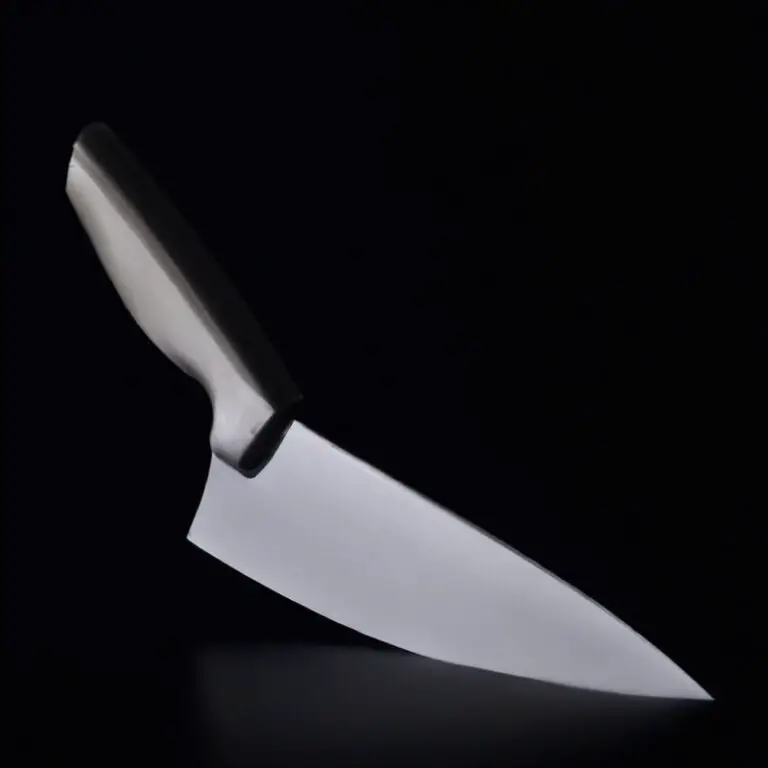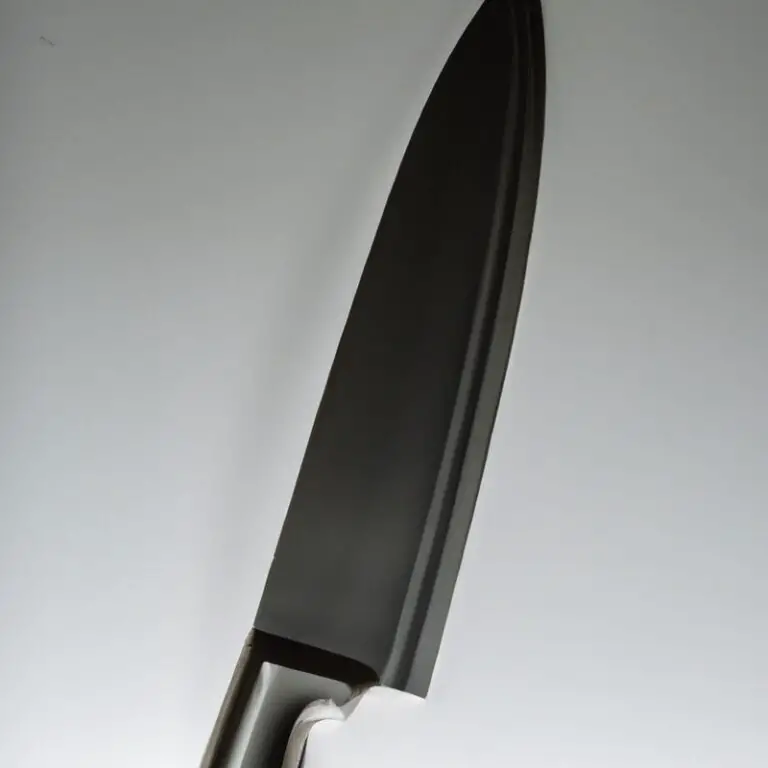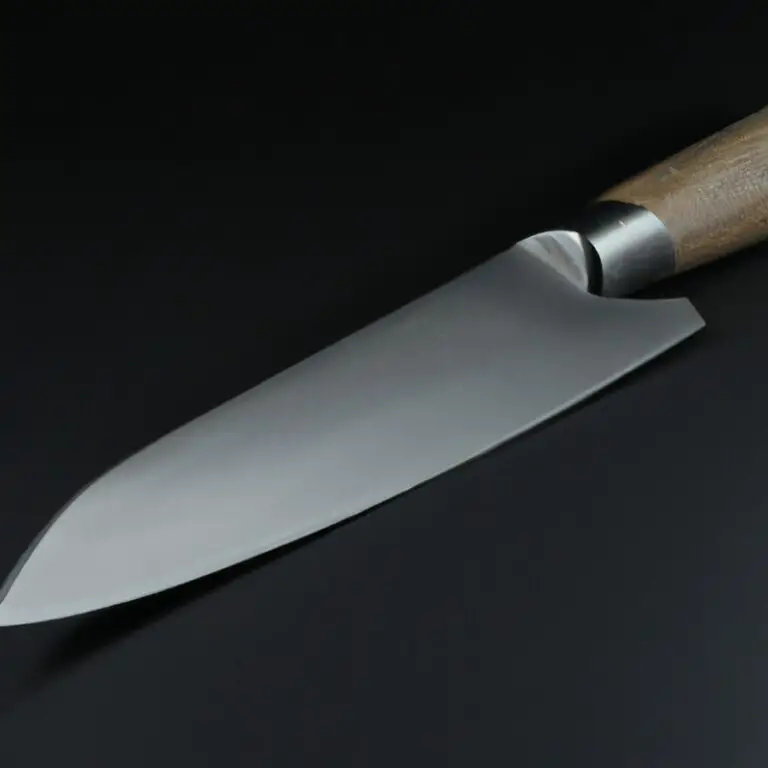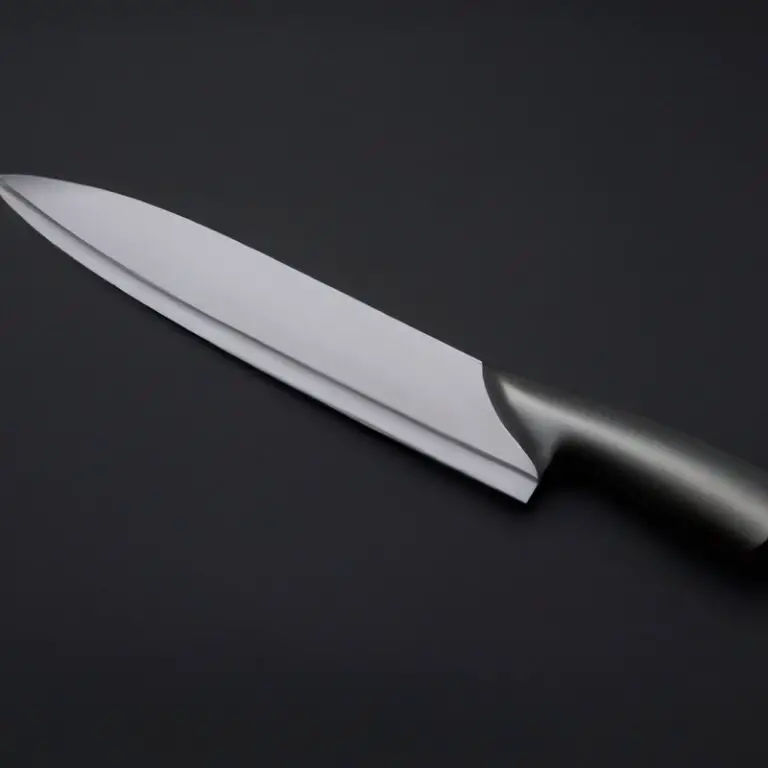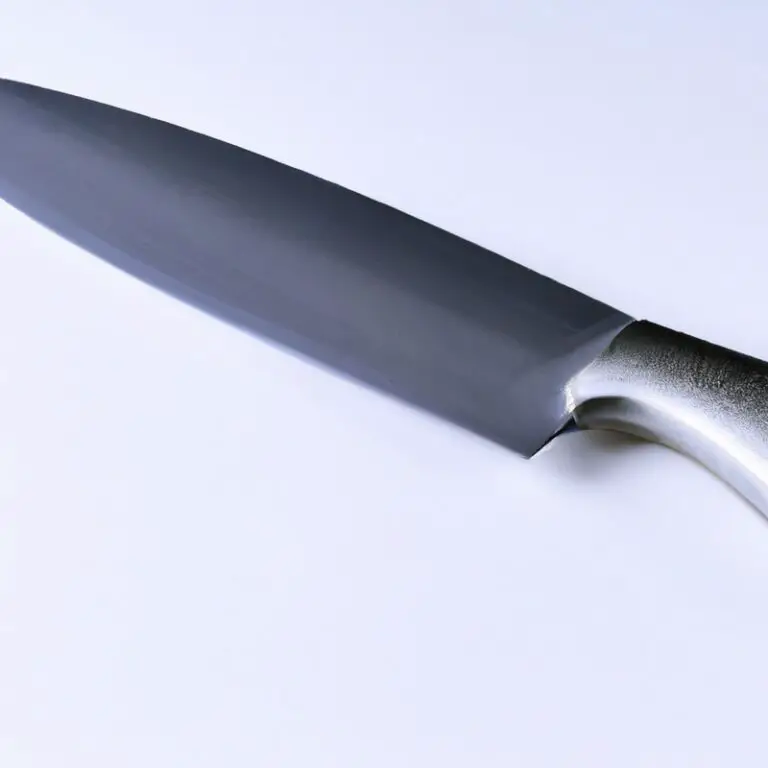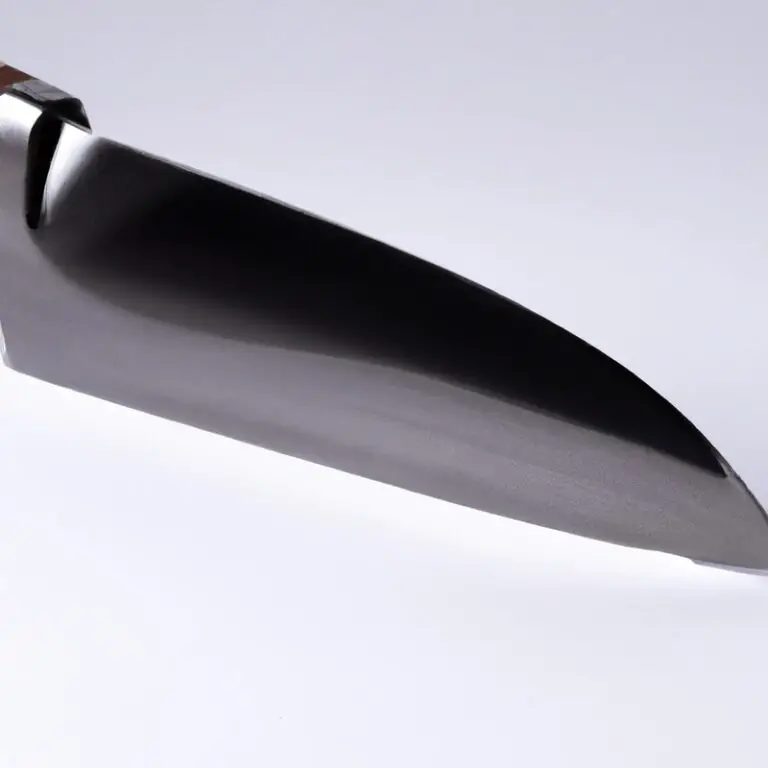How To Clean a Santoku Knife? Easy!
Key Takeaways:
- Clean your Santoku knife immediately after each use to prevent food buildup and bacteria growth.
- Avoid using abrasive materials or cleaning agents that can damage the sharp edge of the Santoku knife.
- Always dry the knife thoroughly after cleaning to prevent rust and maintain its sharpness.
- Proper maintenance and care of your Santoku knife can extend its lifespan and ensure optimal performance.
Are you tired of dull and dirty Santoku knives? Maintaining your Santoku knife is crucial to maintain its sharpness and longevity.
Are you wondering how to clean your Santoku knife properly?
Look no further! In this article, I will be sharing essential tips, dos and don’ts, and a step-by-step guide to clean your Santoku knife correctly. Additionally, I will also cover removing stubborn stains and rust, using oil to protect your knife, when to sharpen your knife, and proper storage techniques to keep it sharp and well-maintained.
So, let’s get started and make your Santoku knife as good as new!
| Steps | Details |
|---|---|
| Step 1: | Prepare a mix of warm water and detergent |
| Step 2: | Clean the blade with the mix using a sponge or cloth |
| Step 3: | Rinse the blade in warm water to remove any soap residue |
| Step 4: | Dry the blade with a soft cloth or towel |
| Step 5: | Store the knife in a dry and safe place when not in use |
| Tips: | Do not use abrasive sponges or cleaners, do not soak the knife or put it in the dishwasher |

Understanding the anatomy of a Santoku knife: Tips for proper maintenance and cleaning
A Santoku knife typically features a flat edge with a slight curve, which makes it versatile and easy to handle. Its blade length ranges from 5 to 7 inches, and it is thinner compared to a traditional chef’s knife.
The blade is typically made of high-carbon steel or stainless steel, which makes it durable and resistant to rust and stains.
For proper maintenance and cleaning, it is important to avoid using harsh detergents and scouring pads, as they can damage the blade’s edge and finish. Instead, use a mild soap and warm water to clean the knife before and after each use.
To keep the blade sharp, it’s important to use a honing steel or sharpening stone regularly.
When sharpening, maintain the blade’s original angle and use a consistent stroke. Always dry the knife thoroughly before storing it to prevent rust and damage.
A wooden or plastic cutting board is recommended to prevent scratching or dulling the blade.
In summary, understanding the anatomy of a Santoku knife can help you properly maintain and clean it. Use a gentle cleaning solution, sharpen the blade regularly, and store it properly to ensure that your Santoku knife remains sharp and in good condition for many years to come.
The importance of cleaning your Santoku knife before and after every use
The importance of cleaning your Santoku knife before and after every use cannot be overstated. Not only does it ensure the hygiene and safety of your food, but it also helps to maintain the integrity of your knife’s blade.
When food particles and moisture are left on the blade after use, they can cause corrosion, dull the blade, and even cause rust.
This can compromise the sharpness and durability of the knife over time, making it less effective and potentially dangerous to use. Therefore, it is crucial to clean your Santoku knife immediately after use with warm soapy water and a sponge, making sure to dry it thoroughly with a clean towel afterward.
By doing so, you’ll not only prolong the lifespan of your knife but also ensure that your kitchen stays clean and hygienic.
Using the right cleaning tools and materials for your Santoku knife
It is important to use the right cleaning tools and materials for your Santoku knife to prevent damage or dulling of the blade. Avoid abrasive materials or cleaners that can scratch or corrode the knife’s surface.
Instead, use a soft cloth or sponge to wipe the blade and handle with mild dish soap and lukewarm water.
To remove stubborn stains or residue, use a paste made of baking soda and water, or a specialized cleaner made for knives. Avoid using the dishwasher or leaving your knife submerged in water, as the high heat and soaking can cause the blade to rust and the handle to become warped.
When drying the knife, wipe it with a clean towel and store it in a knife block or sheath to protect the blade from other objects.
By using the right cleaning tools and materials, you can keep your Santoku knife in optimal condition for years to come.
The dos and don’ts of cleaning a Santoku knife: What to avoid to prevent damage
Dos:
- Clean the knife after each use to prevent the accumulation of dirt and debris.
- Use warm soapy water and a non-abrasive sponge or cloth to clean the blade.
- Dry the knife immediately after washing to avoid rust or discoloration.
- Handle the knife with care while cleaning to avoid any injuries.
- Use a honing steel regularly to maintain the sharpness of the blade.
Don’ts:
- Avoid using any harsh cleaners or abrasives, which can damage the blade.
- Never place the knife in the dishwasher as it can cause the blade to chip or become dull.
- Do not soak the knife in water for too long, as it can cause the blade to rust or corrode.
- Avoid cutting through frozen or hard foods as it can damage the blade.
- Do not neglect the knife’s edges as they are delicate and need proper care.
Following these dos and don’ts can help you maintain the quality and longevity of your Santoku knife.
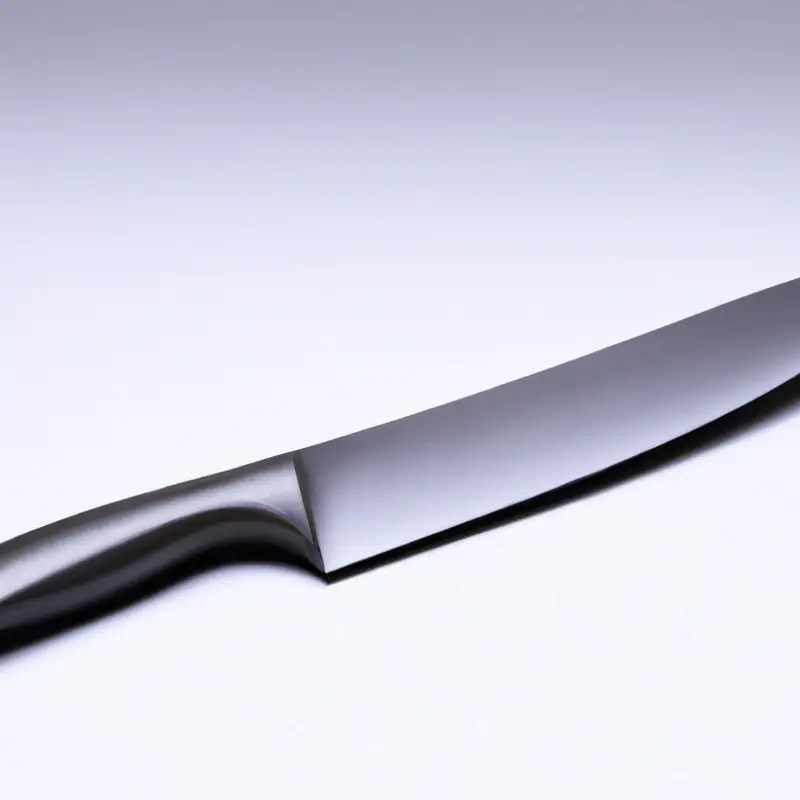
Step-by-step guide on how to clean a Santoku knife properly
Step-by-step guide on how to clean a Santoku knife properly:
- Always clean the knife before and after every use to prevent rust and stains from forming on the blade.
- Use mild dish soap and warm water to clean the blade. Avoid using abrasive cleaners, such as scouring pads, to prevent scratches on the blade.
- Rinse the blade thoroughly with warm water and dry it with a clean cloth or towel.
- To remove stubborn stains or rust, create a paste using baking soda and water. Apply the paste to the affected area and scrub gently with a soft-bristled brush. Rinse with warm water and dry with a clean cloth or towel.
- To maintain the sharpness of the blade, use honing steel to remove any burrs or nicks. Hold the steel vertically and run the blade along the steel at a 20-degree angle. Repeat on the other side of the blade.
- Store the knife in a dry place with a knife guard or sheath to prevent damage to the blade. Avoid storing the knife in a drawer with other utensils where it could become damaged or dull.
Follow these simple steps, and your Santoku knife will remain sharp, sturdy, and long-lasting for all your future cooking endeavors.
Tips for removing stubborn stains and rust from your Santoku knife
Removing stubborn stains and rust from your Santoku knife can be challenging, but it’s crucial to maintain its sharpness and longevity. Here are some tips to remove these tough stains:
- Use a mixture of water and baking soda, and gently rub it onto the affected area. This will help remove any rust or stains on your knife.
- Use a solution of vinegar and water to remove stubborn stains from your knife. Apply the solution using a soft cloth and let it sit for a few minutes before rinsing it off with water.
- For especially stubborn stains, try using a commercial rust remover. However, be sure to read and follow the instructions carefully and avoid leaving the solution on for too long to prevent damage to the blade.
- Avoid using abrasive materials like steel wool or harsh chemicals as they can damage your knife’s blade and handle.
By following these tips, you can effectively remove stubborn stains and rust from your Santoku knife and keep it looking and performing its best.
The benefits of using oil to protect and maintain the sharpness of your Santoku knife
Using oil to protect and maintain the sharpness of your Santoku knife comes with several benefits. Firstly, oiling your knife creates a barrier that prevents moisture from building up, which can contribute to rusting and corrosion.
Secondly, oiling your knife can help maintain its sharpness by reducing the risk of wear and tear caused by friction and contact with other surfaces.
Finally, using oil regularly can help prolong the lifespan of your Santoku knife, making it more durable and reliable in the long run. To oil your knife, simply rub a small amount of oil on the blade and handle using a clean, soft cloth, and wipe away any excess oil.
We recommend using food-grade mineral oil or other specialty knife oils for best results.
How often should you sharpen your Santoku knife and what tools to use?
It is recommended to sharpen your Santoku knife every 6-12 months depending on usage. However, this can vary depending on how frequently you use your knife and how often you sharpen it.
To maintain the sharpness of your Santoku knife, use a sharpening stone or honing rod.
A sharpening stone will remove any dullness or burrs on the blade while a honing rod will straighten and align the blade edge. When sharpening your Santoku knife, use a consistent angle and apply even pressure.
Start with a coarse grit stone and gradually move to a finer grit stone for a polished finish.
Avoid using an electric sharpener as it can damage the blade. Remember, proper maintenance of your Santoku knife can prolong its lifespan and performance.
How to store your Santoku knife to prevent damage and maintain its sharpness
After cleaning and drying your Santoku knife, it’s essential to store it properly to maintain its sharpness and prevent damage. Here are a few simple tips for storing your Santoku knife:
- Use a knife block or sheath: A knife block or sheath is an excellent way to protect your Santoku knife from damage and keep it away from other items in your kitchen.
- Avoid storing in a drawer: Storing your knife in a drawer can cause damage to the blade as it rubs against other utensils and surfaces. It also increases the risk of injury when reaching to grab it.
- Keep it dry: Before placing your Santoku knife in storage, make sure it is dry to avoid any rust or corrosion. You can use a clean towel to wipe it down thoroughly.
- Don’t leave it in water: Leaving your Santoku knife in water for an extended period can damage the blade and handle. Always dry it as soon as possible after use.
By following these storage tips, you can protect your Santoku knife and prolong its lifespan, ensuring it stays sharp and ready for use whenever you need it.
Final Verdict
Cleaning and maintaining your Santoku knife is crucial for its longevity, sharpness, and performance. By following the dos and don’ts of cleaning, using appropriate tools and materials, and incorporating oiling and proper storage, you can ensure that your Santoku knife stays in top shape for years to come.
Remember to always prioritize safety and handle your knife with care.
With these tips and guidelines, you can be confident in your ability to properly clean and maintain your Santoku knife, and enjoy its exceptional cutting ability in your kitchen.

